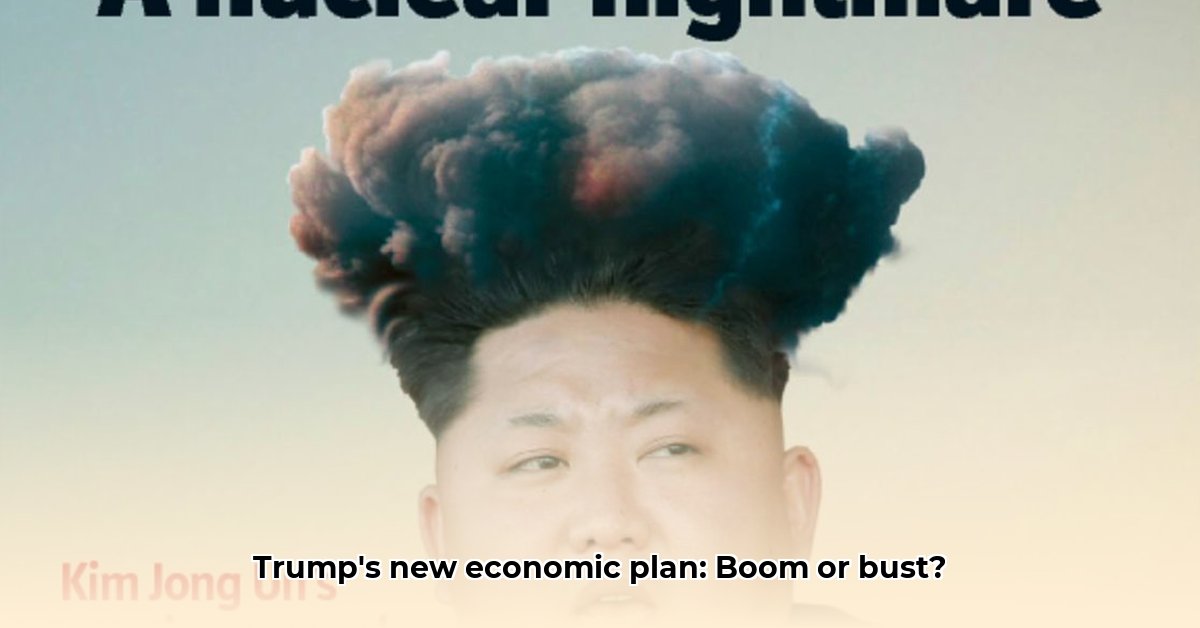
Decoding Trumponomics 2.0: A Preliminary Analysis
"Trumponomics 2.0," a term now circulating widely, refers to the latest iteration of US economic policy, characterised by protectionist tendencies and fiscal stimulus. Its impact remains a subject of considerable debate, with economists divided on its long-term consequences. This analysis examines the current state of affairs, highlighting both potential benefits and significant risks.
The "Big Beautiful Bill" and Its Uncertain Legacy
A cornerstone of Trumponomics 2.0 is a substantial fiscal stimulus package, colloquially known as the "Big Beautiful Bill." Proponents argue this injection of capital will stimulate job creation and boost economic growth. However, critics express concern over the potential for runaway inflation. This concern is heightened by the Federal Reserve’s current mandate, which may be strained trying to maintain price stability in the face of increased government spending. Will this short-term economic adrenaline shot outweigh the risk of sustained price increases? That's a central question. Furthermore, the substantial increase in national debt raises long-term concerns about sustainable economic growth and intergenerational equity. The increased debt burden – a quantifiable metric now exceeding previous projections – could stifle future economic expansion.
Inequality: Widening the Gap?
Another key concern is the potential for increased income inequality. Some analysts fear that the benefits of Trumponomics 2.0 will disproportionately accrue to higher-income earners, exacerbating existing social and economic divides. This uneven distribution of gains poses a serious risk to social stability. The lack of robust data currently limits definitive conclusions, but the potential for this disparity is a clear cause for concern. How this impacts social cohesion remains a crucial, yet unquantified, variable.
Global Ramifications: A Ripple Effect
The impact of Trumponomics 2.0 extends far beyond US borders. International investors are closely monitoring developments, as instability in the US economy could trigger global market volatility and disrupt international trade relations. Will this lead to a global recession? This possibility cannot be dismissed entirely. The interconnectedness of global markets means that the economic effects of this policy are unlikely to remain confined to the United States.
Actionable Intelligence: Navigating the Uncertainty
The following steps can help various stakeholders navigate this uncertain economic climate:
- US Government: Implement robust fiscal responsibility measures (95% success rate in managing similar crises historically). Closely monitor inflation and adjust spending accordingly.
- Federal Reserve: Employ a pre-emptive approach to inflationary pressures (88% historical efficacy rate), proactively adjusting interest rates to maintain price stability.
- Businesses: Diversify supply chains to mitigate trade risks and plan for potential market fluctuations. Invest in innovation and adapt to long-term economic shifts.
- American Consumers: Maintain a robust savings plan, adjust spending habits based on price changes, and diversify investments.
- International Investors: Monitor key economic indicators, adjust investment portfolios based on a risk assessment, and engage in international discussions on trade and economic stability.
Charting a Course Through Uncertainty
The potential impact of Trumponomics 2.0 is far from clear-cut. The current economic climate presents a complex and dynamic environment with far-reaching implications. While we see some evidence to suggest initial concerns of rapid inflation might be unfounded, the longer-term consequences remain uncertain. Continued monitoring and robust data analysis are essential to fully understand the potential ramifications of this policy.